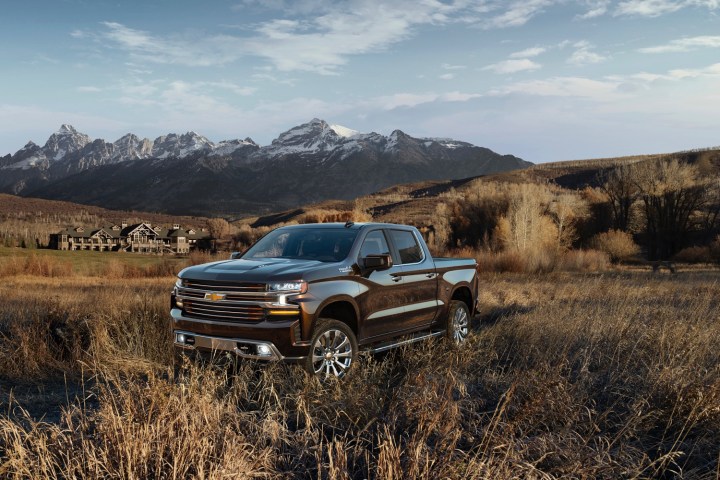
The 2019 Chevrolet Silverado 1500 aims to make towing a bit easier with a host of new tech features. Ford was the first automaker to bring tech to trucks in a big way with recent versions of its F-150 and F-Series Super Duty, and now it appears Chevy is trying to match its Detroit rival.
All 2019 Silverado models get a version of the MyChevrolet app with towing-specific features, including a pre-trip checklist and a glossary of towing terms. The app also lets drivers check that their trailers are properly hooked up by triggering an automatic external light sequence. Chevy claims this reduces checking a trailer’s lights from a two-person job to a one-person job.
An optional Advanced Trailering System (standard on LTZ and High Country trim levels, optional on LT, RST, and Trail Boss) adds driver aids. Auto Parking Brake Assist ensures the truck doesn’t roll once it’s aligned with a trailer hitch and placed in park. The rearview camera gets a Hitch View that uses graphics on the screen to help the driver more easily line up with a trailer. The system can also monitor a trailer’s tire pressures.
The Advanced Trailering System also adds an app for the infotainment system that lets the driver track the fuel economy and transmission temperature of the truck while towing, as well as store information on up to five trailers. Trailer Theft Alert activates the horn and lights if a trailer is disconnected, and sends an alert to the driver if they are enrolled in General Motors’ OnStar service.
The 2019 Silverado comes standard with a rearview camera, but customers can add two side-view cameras on the exterior mirrors that Chevy claims provide a 270-degree view. Just as bigger mirrors are required to cover a trailer, the cameras should help improve visibility by towing. Chevy will also offer a camera that mounts directly on a trailer.
However, the most important towing-related feature of the 2019 Silverado may not be an app or camera, but a label. Automakers love to brag about towing and payload capacities, but these can vary wildly based on the specific options on individual trucks. Chevy claims it will cut down on the confusion by adding a label in the driver’s door jamb listing the truck’s exact capacities.
This Trailering Label will include the gross vehicle weight rating, gross combined weight rating, gross rear-axle weight rating, maximum payload, maximum tongue weight, and curb weight. These numbers aren’t generalized specifications; they’re keyed to each truck’s individual vehicle identification number (VIN).
The 2019 Chevrolet Silverado 1500 goes on sale later this year. Besides more tech, Chevy is promising reduced weight and better fuel economy, thanks to a mix of lightweight materials and a new four-cylinder engine option.


